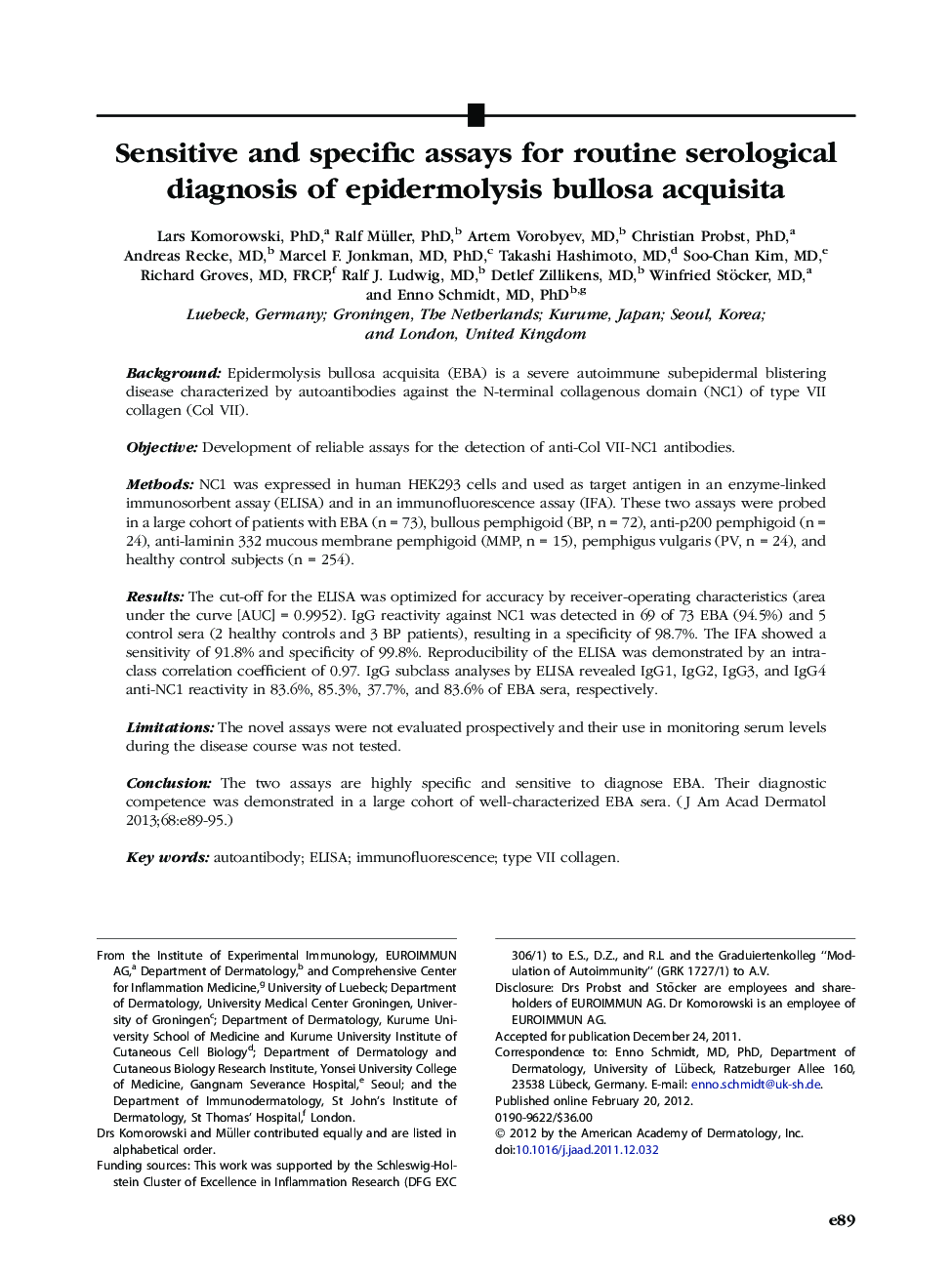| Article ID | Journal | Published Year | Pages | File Type |
|---|---|---|---|---|
| 3206175 | Journal of the American Academy of Dermatology | 2013 | 7 Pages |
BackgroundEpidermolysis bullosa acquisita (EBA) is a severe autoimmune subepidermal blistering disease characterized by autoantibodies against the N-terminal collagenous domain (NC1) of type VII collagen (Col VII).ObjectiveDevelopment of reliable assays for the detection of anti-Col VII-NC1 antibodies.MethodsNC1 was expressed in human HEK293 cells and used as target antigen in an enzyme-linked immunosorbent assay (ELISA) and in an immunofluorescence assay (IFA). These two assays were probed in a large cohort of patients with EBA (n = 73), bullous pemphigoid (BP, n = 72), anti-p200 pemphigoid (n = 24), anti-laminin 332 mucous membrane pemphigoid (MMP, n = 15), pemphigus vulgaris (PV, n = 24), and healthy control subjects (n = 254).ResultsThe cut-off for the ELISA was optimized for accuracy by receiver-operating characteristics (area under the curve [AUC] = 0.9952). IgG reactivity against NC1 was detected in 69 of 73 EBA (94.5%) and 5 control sera (2 healthy controls and 3 BP patients), resulting in a specificity of 98.7%. The IFA showed a sensitivity of 91.8% and specificity of 99.8%. Reproducibility of the ELISA was demonstrated by an intra-class correlation coefficient of 0.97. IgG subclass analyses by ELISA revealed IgG1, IgG2, IgG3, and IgG4 anti-NC1 reactivity in 83.6%, 85.3%, 37.7%, and 83.6% of EBA sera, respectively.LimitationsThe novel assays were not evaluated prospectively and their use in monitoring serum levels during the disease course was not tested.ConclusionThe two assays are highly specific and sensitive to diagnose EBA. Their diagnostic competence was demonstrated in a large cohort of well-characterized EBA sera.
